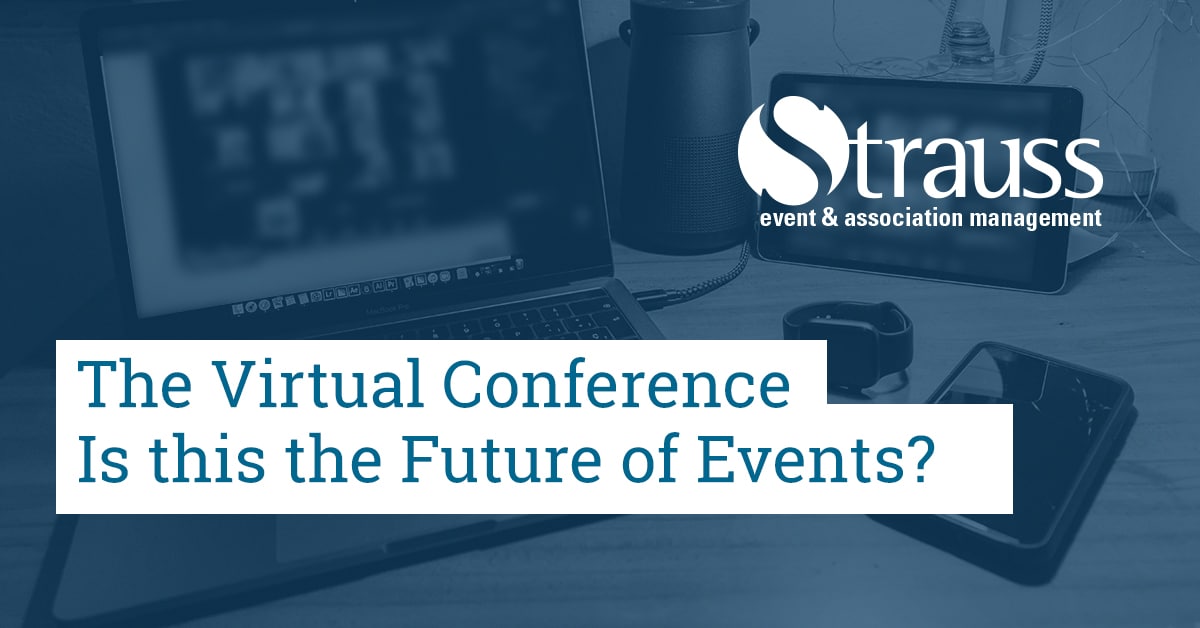In August, I attended my first virtual conference. This two-day conference had keynote speakers, breakout sessions, and a trade show floor. The conference covered what is currently happening in the event industry and the future of events with tips on how to hold successful events in the current state of the world.
This conference is normally held in-person with attendance numbers of around 4,500. This was a free virtual event; the attendance was phenomenal at approximately 40,000 attendees at the opening general session. When I logged in, I was shocked at the amount of people currently viewing the session. It truly showed the power and potential of virtual events and how many people can be reached.
Opening Keynote Speaker
The opening session was an hour and a half. At first, I saw the duration and thought, “how in the world am I going to be able to sit and stare at a screen for that long?” But the speaker did an amazing job keeping the audience engaged by incorporating video clips into his presentation and by adding personal anecdotes.
Here are a few key messages I took from the keynote presentation:
- Events bring unification, which is something we need now more than ever.
- Connecting is fundamental to who we are as people. Members need that emotional human connection which we have lost due to the cancellation of events.
- Event management companies are rising to the challenge to learn, network, and sharpen our skills. We are learning new ways to connect.
- Technology has taken center stage and is the new way forward. It revolutionizes the way we interact with one another.
- One of the goals of virtual events is to bring attendees to in-person events once we can hold them again. In-person events would also have online components—hybrid events will be the new norm.
- “Great events inspire the world!”—my favourite line from the keynote speaker.
The State of the Industry
As we have been pushed out of our comfort zones, it is now time for associations to shine by offering connections by means of virtual events, conferences, trade shows, meetings, professional development, etc.
With the right technology, we can meet in real time, which can lead to faster follow-ups and more connections. It is all about being innovative and creative in how we deliver these events/courses. The event fundamentals have not changed: value, deliver, and engagement. All that has changed is the way they are presented.
We are currently observing the following industry trends:
- A higher level of engagement around professional development.
- Professional development is now a key factor in helping associations move forward.
- An increase of 10–15 times more attendance on online events than before. It is more convenient and cost effective.
- Attendees at these online events attend more sessions than they would have in person. This is because the sessions are on-demand, and attendees view them after the event.
- Convergence of digital marketing with live events.
- The size of events is growing, and they are more valuable, which leads to an increased return on investment for the planners.
The Virtual Experience
Most event planners are taking their events virtual, and as we look to the future, that trend seems to be here to stay. For example, you can learn how a virtual event is produced by reading my colleague’s Case Study: Leading a Longtime Client into a Virtual World.
There are three fundamentals in events:
- Content
- Connection
- Experience
Content
Attendees should be able to access content before, during, and after the event. It should also be on-demand to allow attendees to view at their own convenience.
Connection
Connecting, belonging, the idea of discovery—live events do all of this, so how do we not lose sight of this in this shift to virtual events? How do we connect with the audience? These are the questions to ask when planning events.
Experience
For live events you need to drive as much engagement as possible and make the event participatory. For instance, with on-demand events, it is effective to keep content short to ensure attendees stay engaged, limiting “zoom fatigue” by possibly hosting the event over multiple days. Above all, event success is measured by attendee engagement. For tips on how to manage “zoom fatigue,” read my colleague’s article “Zoom Fatigue”: Is it Affecting Your Association?
Technological Landscape
Online events you need reliable technology, interactive and personalized features, useful analytics, and ways to monetize the experience. There are many options available for hosting these online events, with video being at the center of every event.
- Video conferencing is used for two-way conversations. This is best for no more than 50 people or so.
- Webinar technology allows you to speak to a larger audience than video, up to 1,000.
- Live-streaming is able to scale beyond that 1,000 attendees, up to tens of thousands of people. This formatting is saleable, gives a high-quality experience with flexibility to break outside the formatting of webinars.
There is still a lot we do not know about virtual events; we are in the experimental phase of finding new ways to engage audiences online. We must take what we know and what we have learned from in person live events to produce distinctive and memorable events. Like I quoted earlier, “great events inspire the world!”
For more information on how to get the most out of virtual events, read Maximizing the Potential Benefit of Attending an Association’s Virtual Conference.

